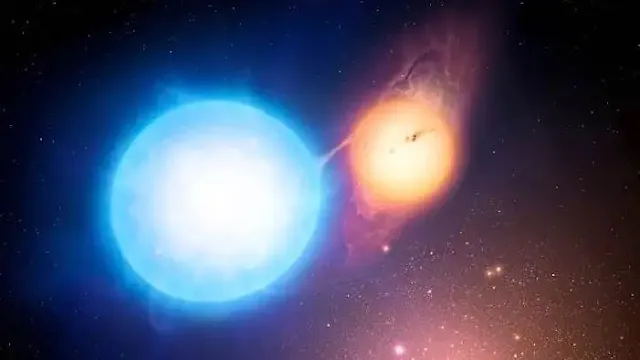Imagine waking up one morning to find another star shining brightly in the sky, a celestial addition to our familiar solar system. Sounds like science fiction, right?
But what if it happened? Let's explore the possibilities. Here is a short explanation.
A New Neighbour
Astronomers estimate that the likelihood of another star entering our solar system is low, but not impossible. If it happened, the new star would likely be a small, cool red dwarf, drawn in by the gravitational pull of our Sun.
This interloper would become a temporary or permanent member of our celestial neighborhood, depending on its mass and velocity.
Effects on the Planets
The arrival of another star would send shockwaves throughout our solar system. The gravitational disruption could:
- Another star could disrupt the delicate balance of our solar system, changing the orbits of planets and potentially leading to catastrophic consequences for Earth's climate and habitability.
- The gravitational influence of another star could disturb the Kuiper Belt and Oort Cloud, sending comets and asteroids hurtling towards the inner solar system, potentially impacting planets and causing devastation.
- In the most extreme scenario, another star could exert such a strong gravitational force that it ejects planets from their orbits, sending them drifting through the vast expanse of space as rogue worlds, potentially never to be seen again.
Impact on Earth
If the new star were close enough, its radiation and solar winds could:
- Enhance or diminish the Sun's energy, affecting global temperatures and weather patterns
- Interfere with Earth's magnetic field, potentially disrupting communication and navigation systems
- Increase the risk of solar flares and coronal mass ejections, impacting our technological infrastructure.
Related: What if Moon explodes?
A New Era of Exploration
On the other hand, another star in our solar system could present unprecedented opportunities for scientific discovery and exploration:
- A fresh source of energy and resources
- Uncharted territories for space missions and colonization
- A chance to study a unique binary or multiple-star system up close
Conclusion
While the possibility of another star joining our solar system is intriguing, it's essential to remember that the likelihood is low.
However, exploring such scenarios expands our understanding of celestial mechanics and the potential for life beyond Earth. So, let's keep gazing up at the stars, wondering what secrets they hold, and maybe, just maybe, we'll witness a new celestial neighbor in the future.
Hope you like the information. Let us know in the comments.

